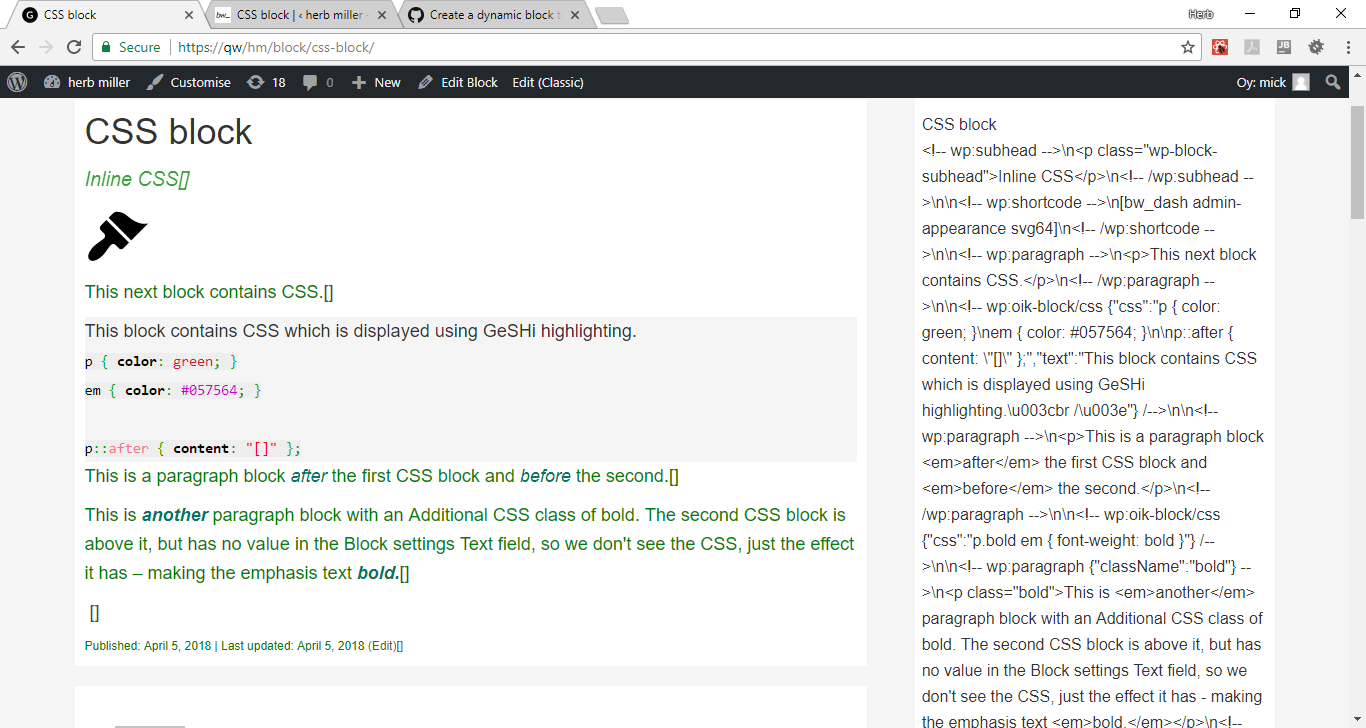I've developed a quick and dirty hack for https://github.com/wordpress/gutenberg/issues/5760 which enables a dynamic block to determine the content that it expects. This has enabled me to complete the first stage of implementing the "CSS" block.
Formatted output. See the source displayed in the sidebar.

Editor view

Now I have to add the text attribute, which will cause the CSS to be displayed, formatted using GeSHi.


The [bw_css] shortcode, from the oik-css plugin, is used to create inline CSS. It can also be used to document the CSS that it generates.
Gutenberg doesn't yet support this shortcode - see Gutenberg issues 5123 and 4456, already referenced by #22 - so we need to support it ourselves.
Requirements
Proposed solution
Note: As previously noted I envisage there to be a problem with this - see #22 - and Gutenberg issues 5760 and 5968.